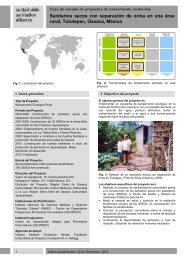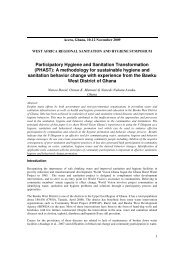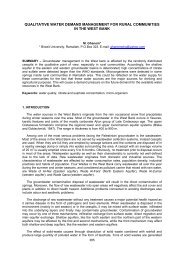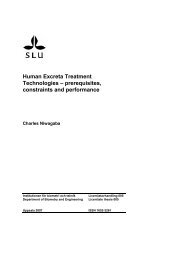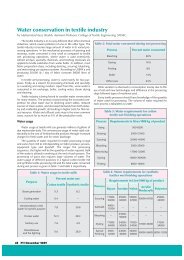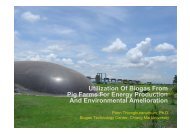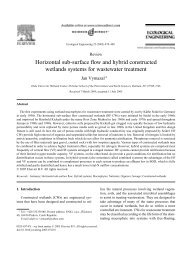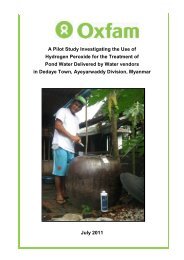Fertigation: Optimizing the Utilization of Water and Nutrients - SSWM
Fertigation: Optimizing the Utilization of Water and Nutrients - SSWM
Fertigation: Optimizing the Utilization of Water and Nutrients - SSWM
You also want an ePaper? Increase the reach of your titles
YUMPU automatically turns print PDFs into web optimized ePapers that Google loves.
Fig. 1. Record yields (yields under ideal conditions) <strong>and</strong> decreases from <strong>the</strong><br />
record yield capacities <strong>of</strong> corn, wheat <strong>and</strong> soybean plants, caused by abiotic <strong>and</strong><br />
biotic stress factors (Bray et al., 2000).<br />
High-‐light stress <strong>and</strong> photooxidation<br />
Photooxidative damage, i.e., light-‐dependent generation <strong>of</strong> reactive oxygen<br />
species (ROS) in chloroplasts, is <strong>the</strong> key process involved in cell damage <strong>and</strong><br />
cell death in plants exposed to environmental stress factors (Foyer et al., 1997;<br />
Asada, 2000; Foyer <strong>and</strong> Noctor, 2005). As shown in Fig. 2, chloroplasts are <strong>the</strong><br />
main sites <strong>of</strong> ROS formation, <strong>and</strong> photosyn<strong>the</strong>sis electron transport provides <strong>the</strong><br />
main means <strong>of</strong> formation <strong>of</strong> ROS such as superoxide radical (O2.-‐), hydroxyl<br />
radical (OH.), <strong>and</strong> singlet oxygen (1O2). ROS are highly toxic to vital cell<br />
constituents <strong>and</strong> are responsible for destruction <strong>of</strong> chlorophyll, DNA, membrane<br />
lipids <strong>and</strong> proteins. Formation <strong>of</strong> ROS is particularly prolific when absorption <strong>of</strong><br />
light energy exceeds <strong>the</strong> capacity <strong>of</strong> photosyn<strong>the</strong>tic electrons to transport it.<br />
Environmental stress factors diminish photosyn<strong>the</strong>tic electron transport <strong>and</strong> CO2<br />
fixation at various stages <strong>of</strong> <strong>the</strong> photosyn<strong>the</strong>sis process (Fig. 2). Therefore, a<br />
combination <strong>of</strong> an environmental stress with high light intensity may induce<br />
severe photo-‐oxidative damage to chloroplasts, <strong>and</strong> consequently cause<br />
decreases in <strong>the</strong> yield capacity <strong>of</strong> plants. The mineral nutritional status <strong>of</strong> plants<br />
greatly influences photosyn<strong>the</strong>sis electron transport <strong>and</strong> CO2 fixation in various<br />
ways (Marschner, 1995; Cakmak <strong>and</strong> Engels, 1999; Mengel <strong>and</strong> Kirkby, 2001).<br />
Impairment <strong>of</strong> <strong>the</strong> mineral nutrition <strong>of</strong> plants can, <strong>the</strong>refore, be accompanied by<br />
an enhanced potential for photo-‐oxidative damage, <strong>and</strong> this threat can be<br />
especially serious when plants are simultaneously exposed to an environmental<br />
stress.<br />
37



